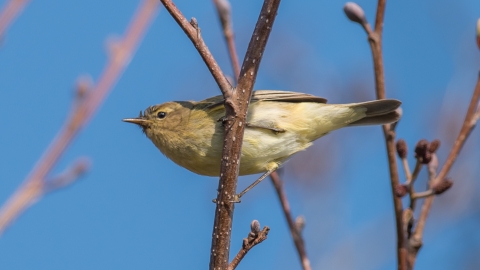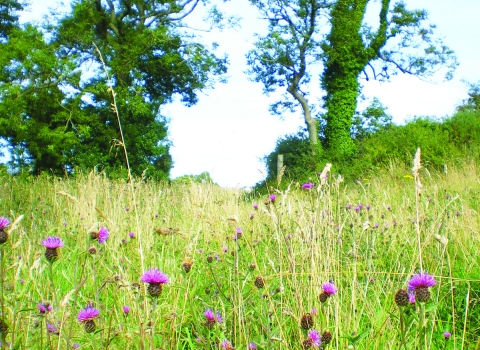
Spinnies Aberogwen nature reserve © Jonathen David Harty

Kingfishers © Jon Hawkins - Surrey Hills Photography

SpinniesAberogwen Nature Reserve_Brian McGarry

Water rail at Spinnies Aberogwen Nature Reserve © Steve Ransome

© NWWT Gary Eisenhauer

Goldfinch at feeder on Spinnies Aberogwen nature reserve © Steve Ransome

Chiffchaff - Janet Packham Photography

© Richard Walliker
Llyn Celanedd (Spinnies Aberogwen) Nature Reserve
Know before you go
Dogs
When to visit
Opening times
Open during daylight hoursBest time to visit
Autumn and Spring for migrants; summer for breeding birds. An hour or so either side of high tide is best for views of birds on the estuaryAbout the reserve
Following a recent public consultation, North Wales Wildlife Trust have decided to use the historic name 'Llyn Celanedd' instead of the more recent ‘Spinnies Aberogwen' for our much-loved nature reserve near Tal-y-bont, Bangor. You can read more here.
Llyn Celanedd (Spinnies Aberogwen)'s series of lagoons and surrounding habitat provide shelter and food for wildfowl, waders and smaller birds, especially during the autumn and spring migrations. The reserve is next to the estuary of the River Ogwen and the tidal mudflats known as Traeth Lafan, and the constant ebb and flow of the tides attract some amazing species – including, on rare occasions, osprey. Tall, graceful stands of common reed provide sheltered nest sites for moorhen as well as an excellent place to watch grey heron and little egret hunting! For much of the year, the brightly coloured kingfisher is a familiar and well-loved sight as it perches around the reserve and dives into the water in search of prey. Bird hides and feeders provide fantastic opportunities to enjoy the wildlife close at hand.
Wonderful work parties
Volunteers and staff work together to manage the reserve’s woodland, grassland, reed beds and lagoons; providing a varied natural environment which supports many different plants and animals. A special sluice gate controls water levels and salinity by letting water out and preventing it flowing back in, helping to prevent flooding and ensuring that the lagoon remains freshwater. Monthly work parties help maintain the bird hides and footpaths, whilst the provision of bird food at the hides is supported by many individuals and local organisations – thank you everyone!
Did you know?
The wetlands of the nature reserve are essentially man-made: thought to be ‘borrow pits’ from which soil was dug, they are certainly by-products of the diversion and canalisation of the River Ogwen in the early nineteenth century.
Directions
Llyn Celanedd (Spinnies Aberogwen) is easily accessible from Junction 12 of the A55. Heading towards Bangor/Tal-y-Bont, look for the brown ‘Nature reserve’ sign. Follow it down a minor road for approximately 1 mile to reach the coastal car park (SH 615 723), before carefully walking back towards either entrance to the reserve.
Species
Contact us
Iolo at the Spinnies (https://vimeo.com/353950477)
@Mark Roberts NWWT
Make a donation
Support us
Join today!






